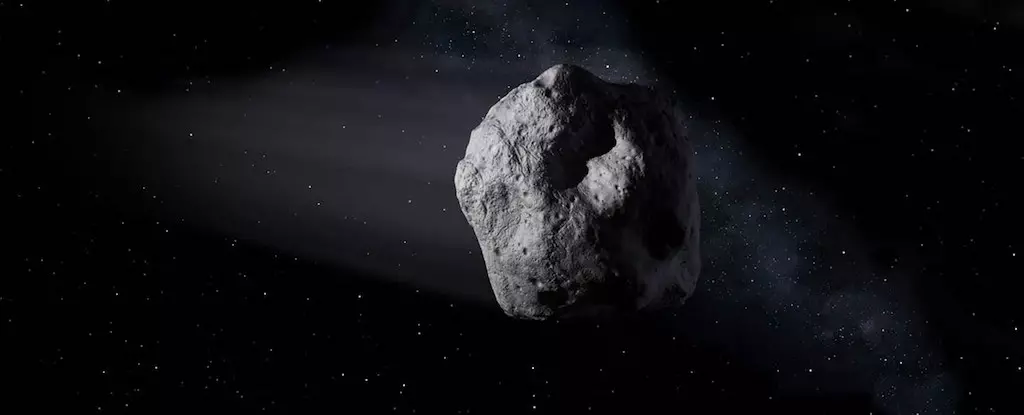In the realm of astronomy, spontaneity often fuels human imagination. Whenever a new celestial object drifts into our vicinity, especially those with irregular or Earth-like orbits, it’s tempting for many to speculate about alien technology or interstellar probes. This knee-jerk reaction is almost instinctual—an attempt to ascribe extraterrestrial agency to what might simply be natural phenomena. History shows us how fleeting such assumptions are; one moment an object is “alien,” the next it’s thoroughly explained by physics and celestial mechanics. The discovery of 1991 VG, initially perceived as another intriguing interstellar visitor, exemplifies this pattern. Over time, scientists unraveled its true identity as an asteroid, part of a larger family called Arjuna asteroids—Near-Earth Objects (NEOs) that gracefully dance around our planet in resonant orbits, yet are neither gravitationally bound nor alien in origin.
This transition from speculative awe to scientific understanding underscores a crucial aspect of astronomical research: patience. It emphasizes the importance of studying orbital mechanics thoroughly before jumping to extraterrestrial conclusions. The recognition that objects like 1991 VG—and more recently 2025 PN7—are enigmas shaped by celestial physics rather than alien ingenuity represents a triumph of science over sensationalism. These objects belong to a specific class called quasi-satellites, which occupy a fascinating intermediary space in Earth’s neighborhood—fascinating precisely because of their elusive behavior and transient relationships with our planet.
The Nature and Significance of Quasi-Satellites
Unlike true moons, quasi-satellites such as the newest addition, 2025 PN7, are not gravitationally captured in a permanent orbit. Instead, they exhibit a resonant motion around Earth, lingering in its vicinity for extended periods without becoming true satellites. This means they follow a path that appears to orbit Earth when viewed from afar, but are technically independent objects orbiting the Sun, maintaining a locked relationship with our planet through gravitational resonance.
This subtle distinction is vital because it explains why these objects are not permanent fixtures like our Moon. They drift in and out of Earth’s gravitational influence, sometimes even becoming mini-moons—temporary gravitational captives that can circle Earth for months or years before venturing off into their solar trajectories. The recent case of 2024 PT5, a temporary mini-moon, exemplifies this phenomenon. While its orbit kept it tethered to Earth, it was never truly a part of our planetary system in the same sense as the Moon.
The importance of recognizing quasi-satellites and mini-moons lies in their potential for scientific discovery and planetary defense. These objects can serve as accessible targets for close-up inspection, offering insights into asteroid composition, orbital dynamics, and Earth’s gravitational environment. Their existence and behavior challenge our understanding of planetary neighborhoods, revealing an intricate dance rather than a simple, static arrangement.
The Implications of Transient Earth Companions
The dynamic existence of objects like 2025 PN7 prompts a reevaluation of how we perceive near-Earth space. The notion that some asteroids might be quasi-permanent residents or temporary visitors raises questions about how often objects transit our orbital vicinity undetected or unappreciated. These findings complicate the concept of “safe” space, suggesting that Earth’s neighborhood is more fluid and complex than the static models often imply.
Moreover, the relatively short lifespan of 2025 PN7—estimated at approximately 128 years as a quasi-satellite—illuminates the transient nature of these relationships. It invites speculation about the future of Earth’s orbital environment: How many similar objects are currently skimming past unnoticed? How many could become temporary mini-moons, offering windows of scientific opportunity before drifting away? Such questions underscore the importance of vigilant observation and continuous surveillance of near-Earth space.
In essence, the discovery and study of these quasi-satellites challenge the simplistic narrative that space objects are either “alien” or “ordinary.” Instead, they exemplify a middle ground—cosmic curiosities shaped by celestial mechanics, resonances, and gravitational interactions. Recognizing this complexity deepens our understanding of planetary defense, resource potential, and the ongoing narrative of our place in the cosmos. It pushes us to move beyond fear or fascination rooted in sensationalism and toward a more nuanced appreciation of the intricate ballet of celestial bodies that share our corner of the solar system.


Leave a Reply